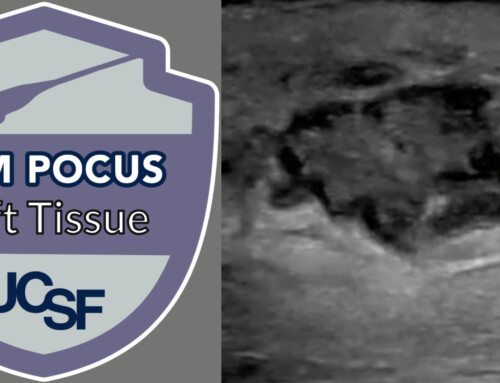
A forty-nine-year-old male with a history of polysubstance abuse, including methamphetamine and intravenous (IV) drug use, rectal cancer, and human immunodeficiency virus (HIV) was brought into the emergency department by emergency medical services (EMS) after he was found down at the bottom of a flight of stairs by his roommate. In the emergency room, he was found to have a Glasgow Coma Scale (GCS) score of 7 and was intubated for airway protection. Non-contrast head CT was performed. Per the roommate, the patient had been “not himself,” exhibiting strange behavior and weight loss. History and review of systems (ROS) were otherwise unobtainable due to the acuity of illness.
Vitals: Not given
General: Arrived boarded and collared by EMS, toxic-appearing
Head: Superficial abrasion to nasal bridge, lower teeth loose with instability of inferior alveolar ridge, swelling noted to right posterior scalp, with yellow nasal discharge
Cardiovascular: Tachycardia
Pulmonary: Coarse breath sounds bilaterally, equal chest rise
Genitourinary: Rectal exam with decreased tone
Neuro: Unresponsive
Skin: Warm to touch; dusky appearing nose, ears, hands, knees, and feet; with a superficial abrasion to sacrum
CBC: WBC 20.9 x 10^9/L; Neutrophils 90.9%
Lactate: 5.6 mmol/L
HIV: Positive
Procalcitonin: 82.55 ng/mL
Lumbar Puncture

Image 2: Results showed purulent, cloudy CSF
India ink: Positive
Cryptococcal antigen-cerebral fluid (Ag-CSF): Positive
India ink stain is a common diagnostic tool for identifying cryptococcus in cerebrospinal fluid (CSF), yet the sensitivity of India ink microscopy is less than 86 percent. India ink is particularly insensitive for low fungal burdens, which can be common in persons presenting early after symptom onset or in those on antiretroviral therapy (ART). The sensitivity of India ink decreases to 42 percent with fungal burdens of less than 1000 colony-forming units.
Cryptococcal antigen (CrAg) in CSF, serum, or plasma has become an essential diagnostic tool and should be performed on CSF for all patients with HIV with suspected meningitis or any central nervous system (CNS) symptoms to confirm a suspicion of cryptococcal infection. The sensitivity of CrAg is 99 percent in blood, and higher in CSF.

Image 3: Brain with signs of meningitis
The computed tomography (CT) imaging done showed no obvious intracranial abnormality or intracranial consolidation/lesion as commonly seen in cryptococcal meningitis. The patient was found down with a known immunocompromised state and therefore required a large differential diagnosis. Lumbar puncture was obtained and revealed purulent, cloudy CSF—concerning for an acute infectious etiology. India ink was positive and the diagnosis was confirmed with a positive cryptococcal Ag-CSF. The patient was started on amphotericin B and flucytosine without significant improvement in encephalopathy. The patient went into cardiac arrest on day five of his intensive care unit (ICU) admission without return of spontaneous circulation. An autopsy was requested and showed purulent fluid within the meninges consistent with meningitis.
Take-Home Points
- Cryptococcal infections are fungal infections most commonly seen in immunocompromised patients, including patients on chronic immunosuppressive therapy and steroids.
- Clinical symptoms can be non-specific, such as fevers, cough, syncope, and headaches.
- Diagnosis is made by lumbar puncture with a positive India ink stain or with a positive cryptococcal antigen test.
- Jarvis JN, Harrison TS. HIV-associated cryptococcal meningitis. Aids. 2007;21(16):2119-2129. PMID: 18090038
- Powderly WG. Cryptococcal meningitis in HIV-infected patients. Current Infectious Disease Reports. 2000;2(4):352-357. PMID: 11095877
- Reichert, C. M., O’Leary, T. J., Levens, D. L., Simrell, C. R., & Macher, A. M. (1983). Autopsy pathology in the acquired immune deficiency syndrome. The American journal of pathology, 112(3), 357–382.
- Sloan D, Parris V. Cryptococcal meningitis: epidemiology and therapeutic options. Clinical Epidemiology. 2014:169. PMID: 24872723
Copyright
Images and cases from the Society of Academic Emergency Medicine (SAEM) Clinical Images Exhibit at the 2020 SAEM Annual Meeting | Copyrighted by SAEM 2020 – all rights reserved. View other cases from this series on ALiEM.

Eric M. Beyer, MD
Department of Emergency Medicine
Emory University School of Medicine

Latest posts by Eric M. Beyer, MD (see all)
- SAEM Clinical Image Series: The Cocaine Gut - August 17, 2020
- SAEM Clinical Image Series: Found Down with Altered Mental Status - August 10, 2020



